TP-Link RE705X Wi-Fi extender review
TP-Link RE705X: Specs
Wi-Fi Spec: AX3000
Number of Antennas/Removable: 2/No
Ports: 1 LAN gigabit per second
Peak 802.11ax performance: 528.0Mbps (10-feet from extender)
Range: 110 feet
Size: 4.9 x 2.9 x 1.9 inches
Estimated Annual Electricity Cost: $7.90
On paper the TP-Link RE705X seems like the perfect Wi-Fi extender. It can use wide 160MHz data channels, has a three-year warranty and the ability to link it to a mesh network. It might run on the hot side and lack a USB port for adding storage to a network but the RE705X is nothing short of the fastest extender available.
Our TP-Link RE750X review will help you decide if this is the best Wi-Fi extender for your needs or if you’d be better off with a different extender to eliminate Wi-Fi dead zones in your house.
TP-Link RE705X review: Pricing and availability
One of the most expensive plug-in Wi-Fi extenders, the TP-Link RE705X costs $110. It’s good for adding up to 2,000 square feet of territory to a wireless network, according to TP-Link.
TP-Link RE705X review: Design
It may not be the smallest Wi-Fi extender available but the 4.9- x 2.9- 1.9-inch TP-Link RE705X is about 15 percent smaller than the Tenda A27 and looks positively tiny next to Netgear Nighthawk EAX80. As is the case with the Tenda A27, the RE705X has a pair of external flat paddle antennas. They rotate to be marginally aimable.
The extender has a two-prong plug that can be inserted directly into an AC outlet. Its flat front has four LEDs on the front edge. On top of lights showing the status of the 2.4- and 5GHz networks, there’s a power light to show it’s on.

The last LED is a crude signal strength meter that glows blue when everything is connected, while solid red means it has a weak signal. A blinking red signal means it’s offline and needs some attention. Happily, the LED lights are not particularly bright and can be turned on or off as well as scheduled with the company’s Tether app.
TP-Link RE705X review: Performance
The TP-Link RE705X extender pushed wireless data into previously unconnected areas of my home and did so with excellent speed. It has the power to put the LAN where it belongs – everywhere.
With the extender 40-feet from the Asus AXE-11000 router and the Samsung Galaxy Book Pro test system another 10 feet farther away, the RE705X delivered 528.0Mbps, several times what the other plug-in extenders we tested delivered and over a third more throughput than the EAX80’s 358.0Mbps.
When I moved the test notebook 40 feet farther away, the throughput dropped to 248.1Mbps. While that’s ahead of the other plug-in extenders, it is 22 percent off the EAX80’s 301.9Mbps under the same conditions. With the receiving test system set up a floor above, the RE705X yielded 255.5Mbps of throughput, still ahead of the other plug-in extenders but short of the larger EAX80’s 320.0Mbps.
Over my two weeks with the extender, it easily handled emails, 4K videos and music, had a range of 110 extra feet and used 4.8-watts of power. If you pay the national average of 15 cents per kilowatt hour of electricity, it will cost an estimated $6.30 a year to use the RE705X. Despite having lots of cooling vents around its perimeter, the RE705X was one of the hottest extenders I’ve seen or felt at 115 degrees Fahrenheit. That’s equal to the D-Link E15.
TP-Link RE705X review: Features
The RE705X can spread a Wi-Fi network across unconnected parts of a home by using many of the latest Wi-Fi 6 tricks, like MUMIMO, beamforming and 1024 QAM modulation to boost speed. It adds TP-Link’s Adaptive Path Selection system that picks the best route for the data to travel. It can’t extend a Wi-Fi 6E 6GHz signal, however.
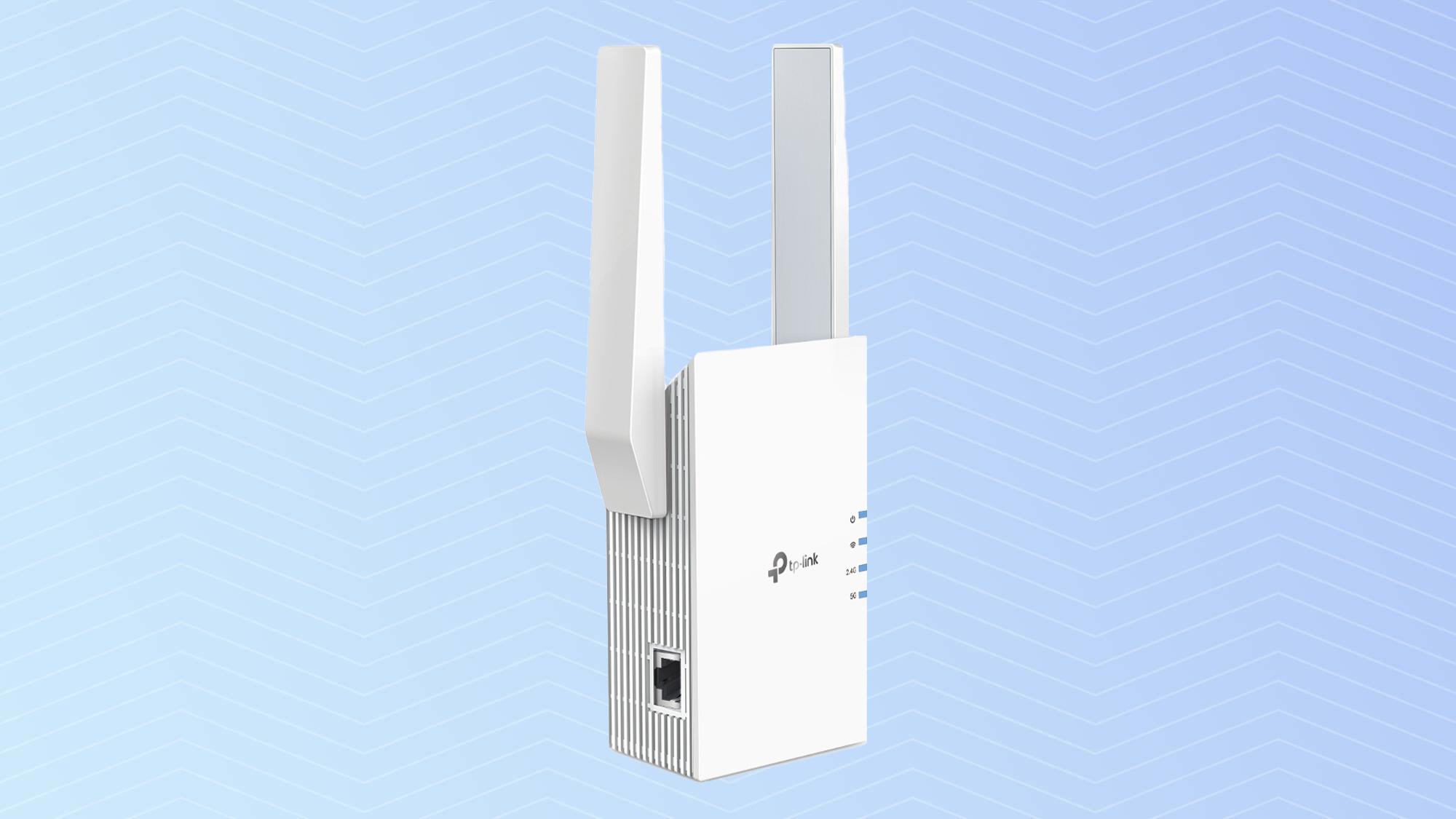
Based on using 2X2 data streams, the RE705X can move upwards of 574Mbps in 2.4GHz mode as well as 2,402Mbps in 5GHz mode for an AX3000 throughput rating. On the left side is a gigabit per second Ethernet port for using the RE705X as a wired access point, but the system lacks a USB port for adding storage to the network. On the other side are buttons for invoking the system’s WPS routine for quickly connecting the extender. There’s a recessed reset key but to turn it off, you need to unplug it.
TP-Link RE705X review: Setup and software
Setting up the TPL RE705X to extend my network took a little over six minutes. After I loaded the TP-Link Tether app on my Samsung Galaxy Note 20 phone, I plugged the RE705X into a wall outlet about 40-feet from the Asus GTAXE11000 gaming router. Next up, I created a TP-Link ID using an email address and password.
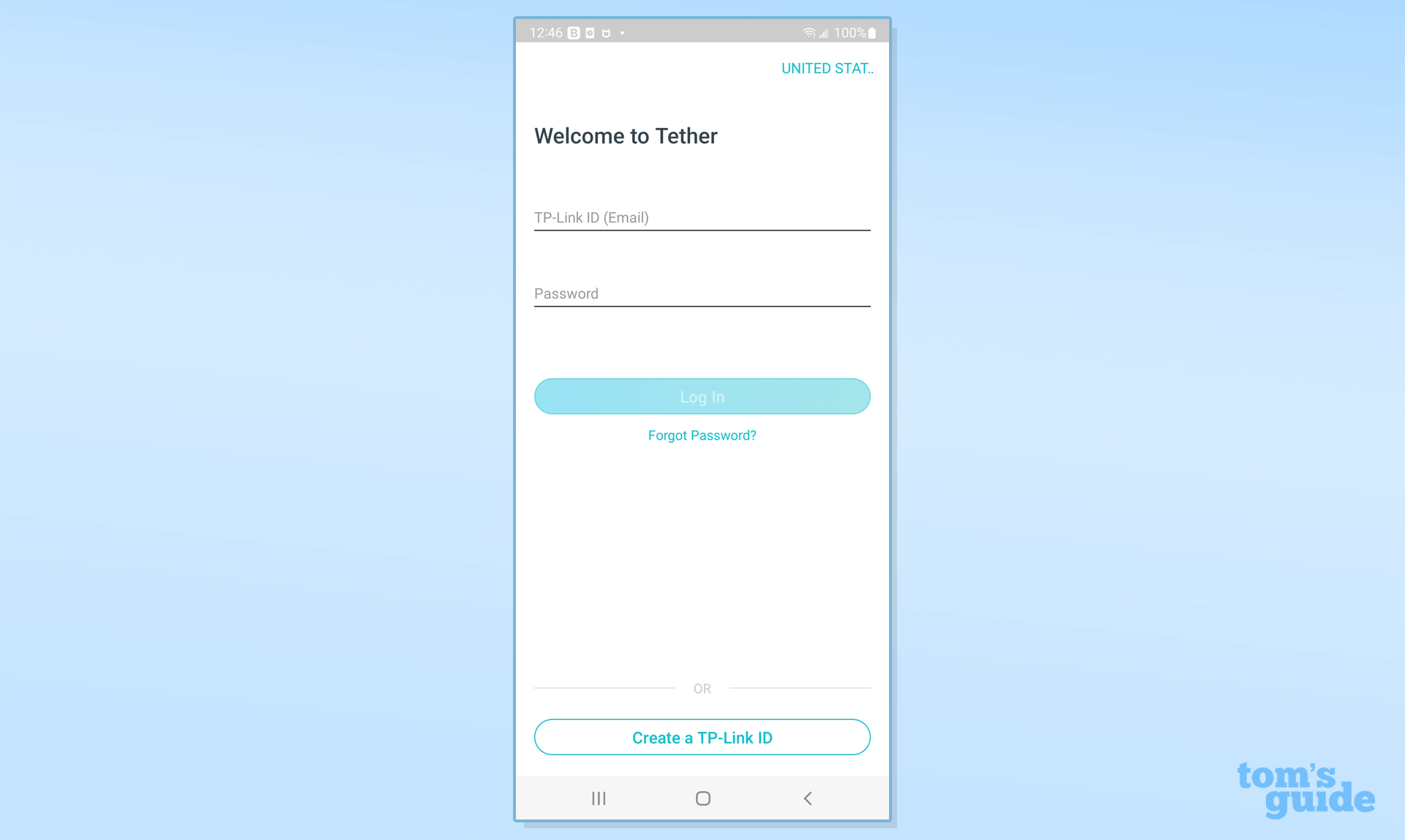
After I set the phone’s Wi-Fi network to the extender’s “TP-Link_Extend” default network, the app quickly found the device. I needed to add an administrator password.
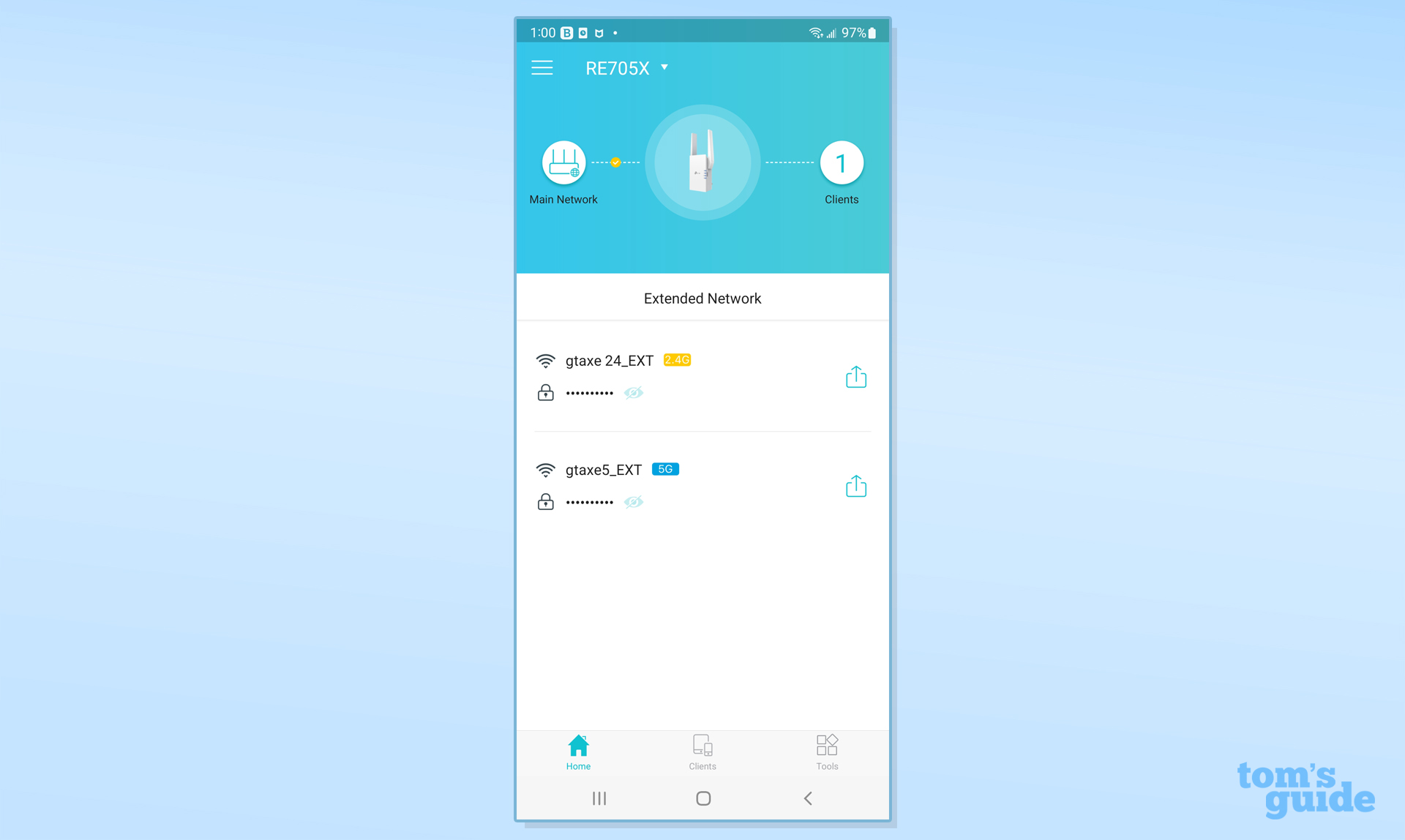
Next, I picked the 2.4- and 5GHz LANs I wanted to extend and added a password. Less than 20 seconds later it was online and showed all blue LEDs for a good connection.
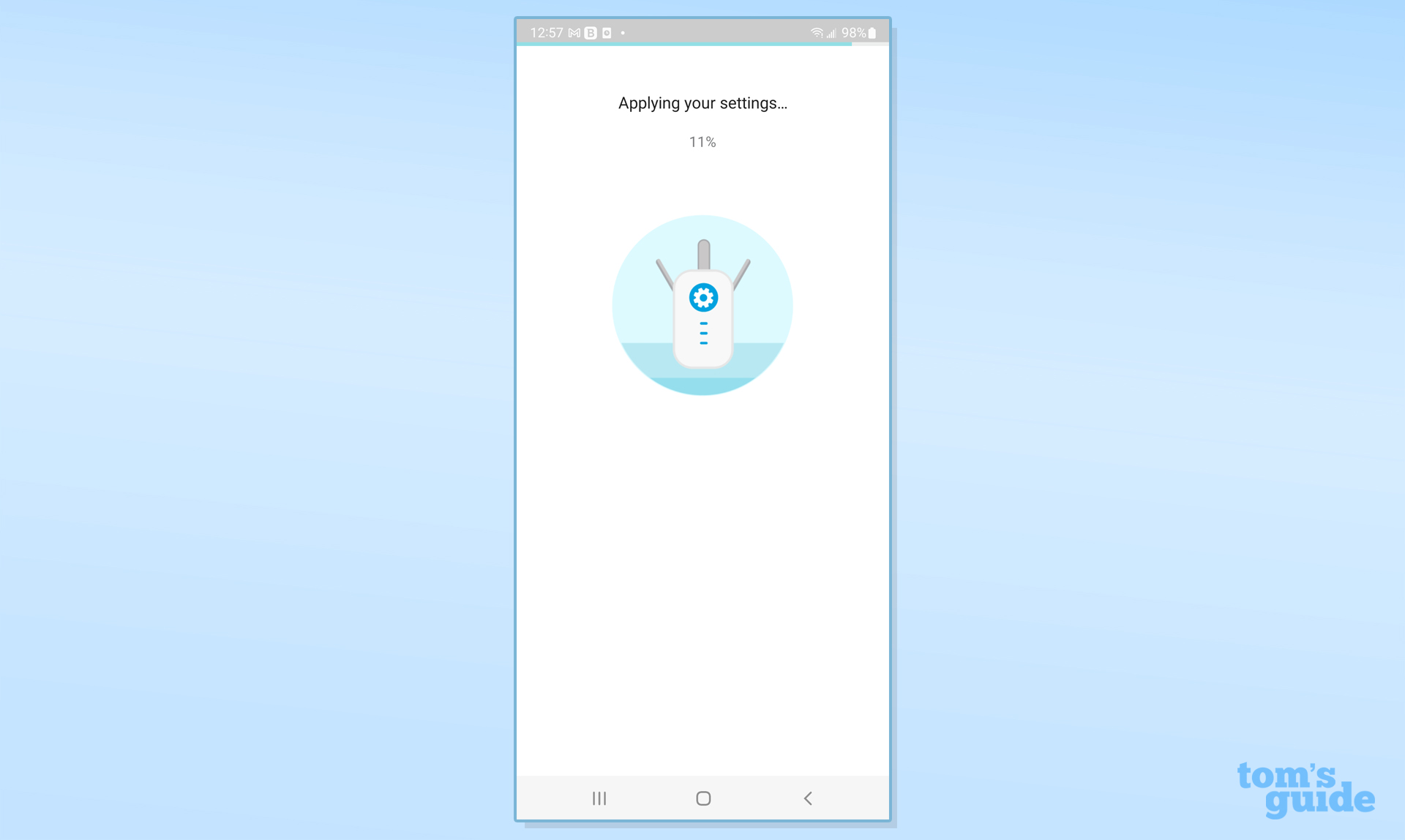
The Tether app has a few tricks up its sleeve by showing the network’s topology and the connection details. Below are tabs for Clients to see what’s online. The Tools section is one of the most extensive for an extender with the ability to redo its configuration as an access point or connect the RE705X to a TP-Link OneMesh network.
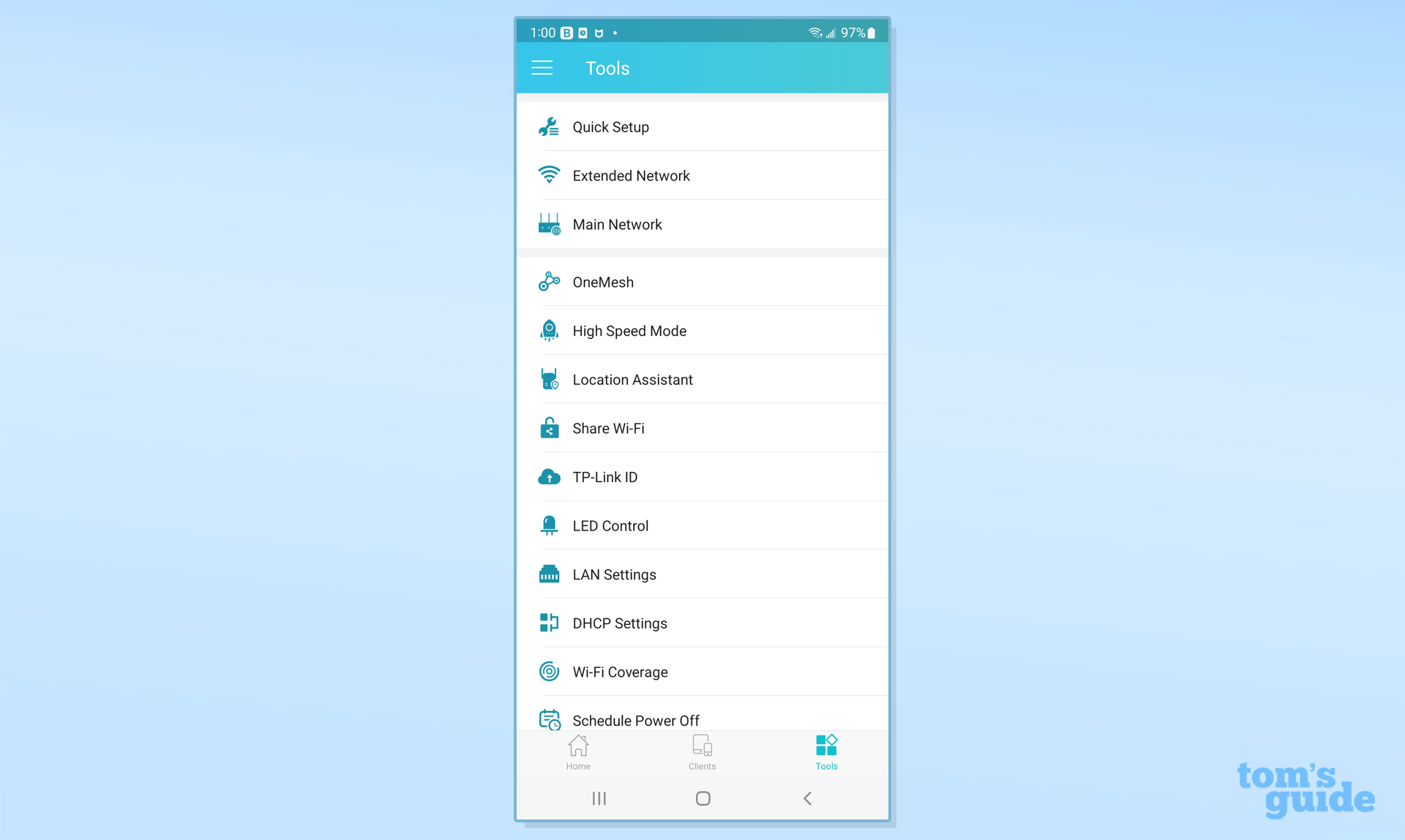
In addition to an assistant for getting the extender’s location perfect, there’s a place to turn the LEDs on or off or set up a daily schedule.
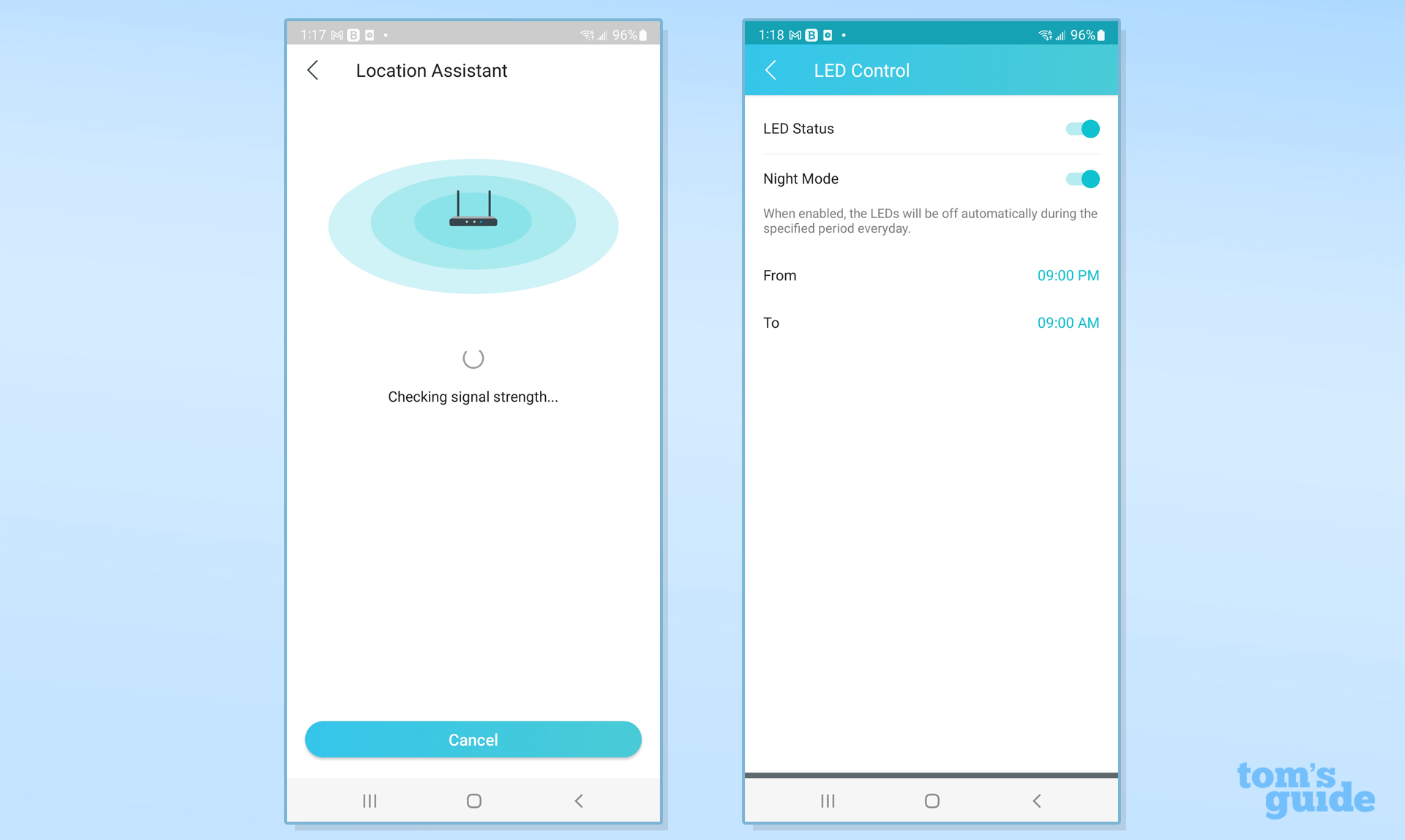
There’re a couple of tweaks that most other extenders don’t allow. My favorite is the ability to use a wide 160MHz data channel in the 5GHz band.
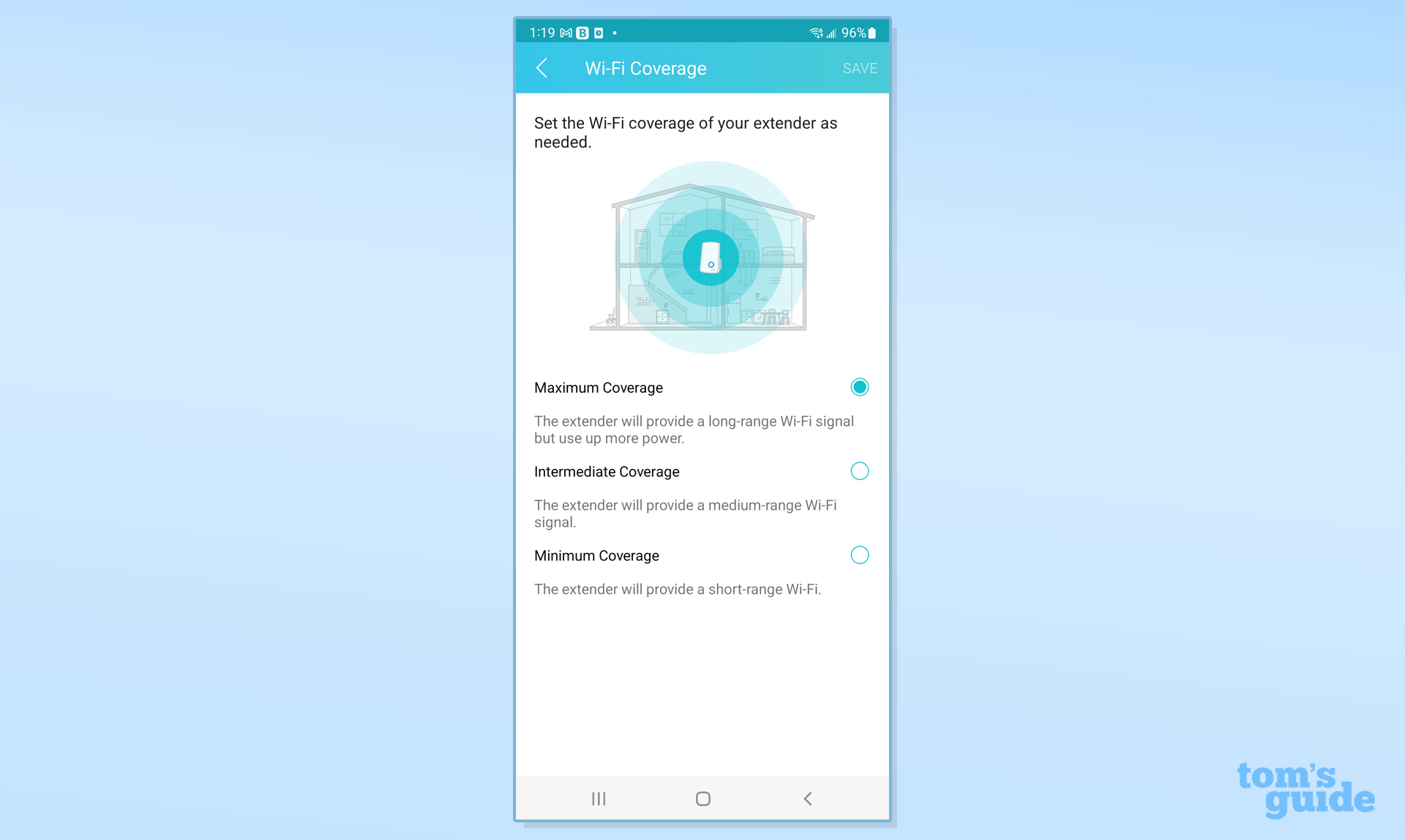
Plus, I was able to tune the transmission level to the location so too much data doesn’t spill over into my neighbor’s property. The interface has a place to update the extender’s firmware but lacks quality of service (QoS) for setting data priorities.
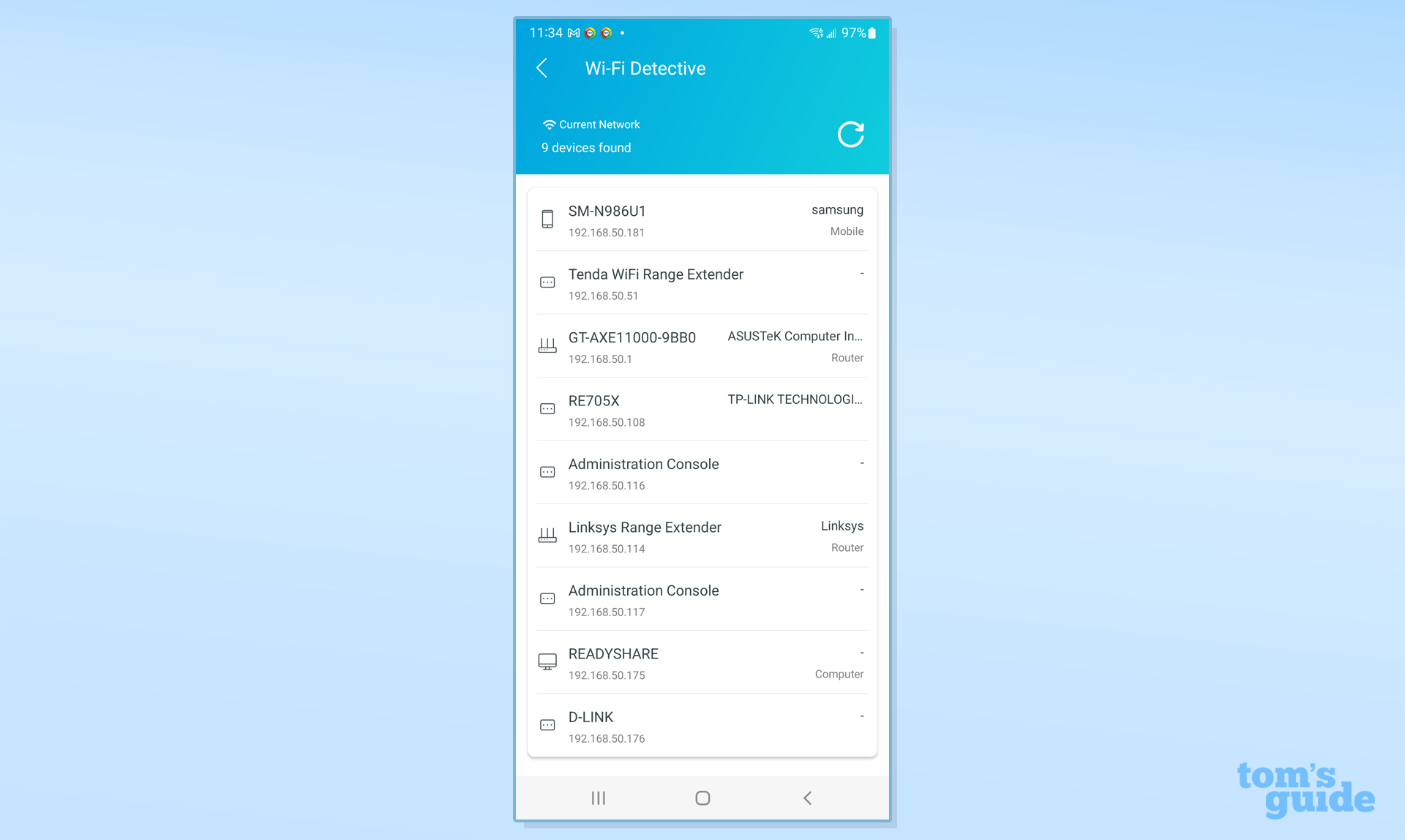
There’s a cool add-on that can interrogate your LAN, looking for security weaknesses called Wi-Fi Detective. It’s well hidden in the experimental Tether Lab area though.
TP-Link RE705X review: Warranty and support
TP-Link’s two-year warranty and lifetime support is in the middle of the pack. It’s a lot better than the one-year of coverage and limited support access for Netgear and D-Link extenders but second rate next to the Tenda A27’s three-year warranty.
TP-Link has one of the best support sites for an extender. In addition to FAQs and new firmware, there are three set up videos for using WPS, the app or a connected browser.
[[tpl re705x support]]
TP-Link RE705X review: Verdict
With nothing short of the best performance for a plug-in extender, the TP-Link RE705X is the one to get in order to push a high-performance network into new areas of a home. It not only has a 160MHz data channel available, but its 110 foot range is among the best and it can work with TP-Link’s OneMesh equipment. It may be one of the most expensive plug-in extenders, but the RE705X is worth it and more.
For all the latest Technology News Click Here
For the latest news and updates, follow us on Google News.
